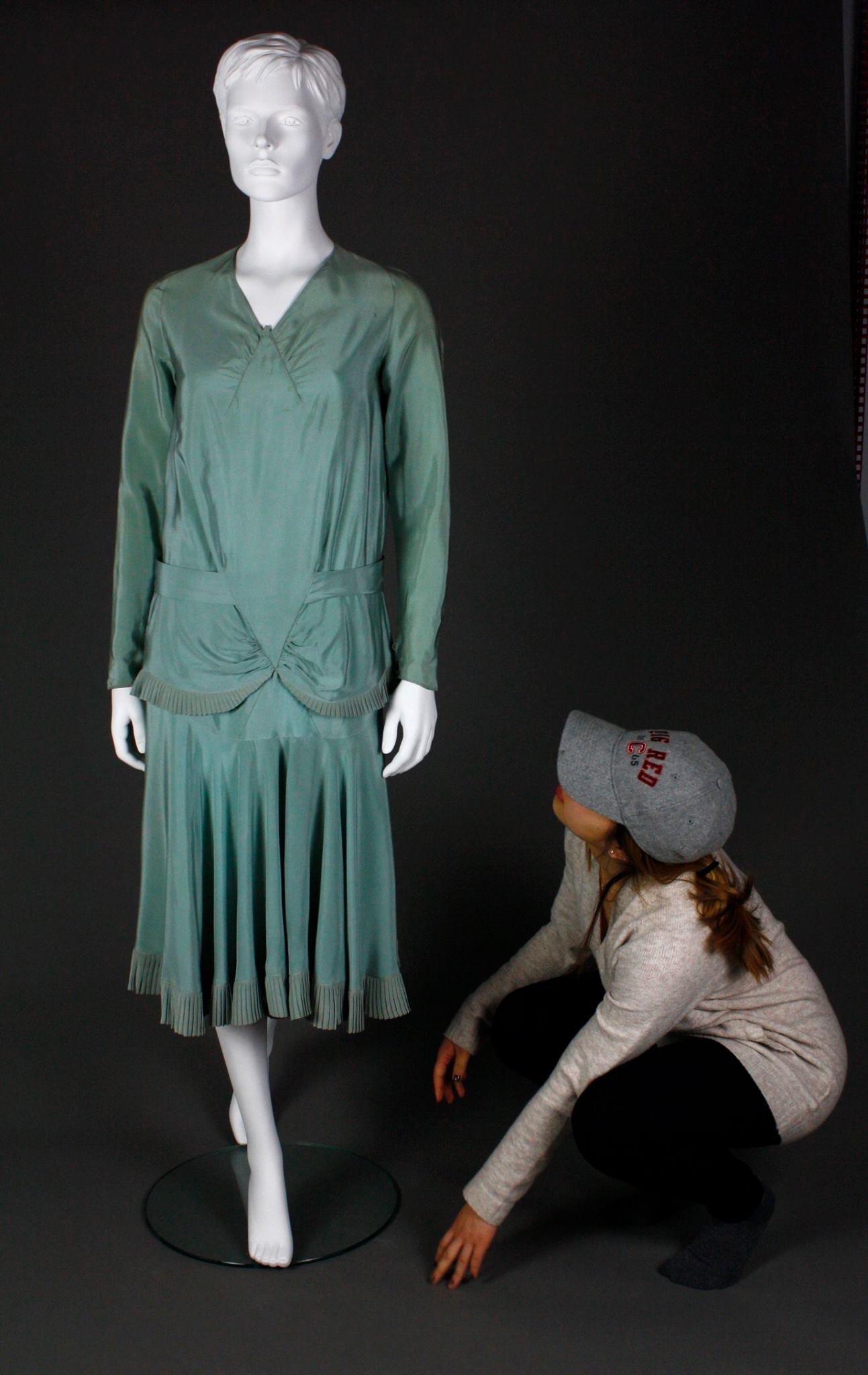Regina Mun is a junior majoring in fashion design. From developing expertise in dressing Japanese kimono to helping with exhibition installations and our inventory project, Regina has spent the last three years making herself invaluable to us! She’s studying abroad this semester at ESMOD (École supérieure des arts et techniques de la mode). She is missed – we are eagerly awaiting her return next fall.
When did you begin working in the collection and what inspired you to join the CCTC?
I began working spring semester of my freshman year after having taken FSAD 1250: Art, Design & Visual Thinking. I wanted to work hands on with pieces in the collection and get to know the history behind them.
What is your favorite piece in the Cornell Costume & Textile Collection and why?
One that sticks out is a felted wool ten gallon hat worn by George Fredrick Warren in the early 1900s (Acc. #2010.04.02). He was the head of Agricultural Economics here at Cornell and Warren Hall was named after him. It’s crazy to imagine some of these pieces being worn by our alumni back in their day.

Regina prepares for photography of a 1920s dress worn by the founder of the CCTC, Professor Beulah Blackmore.
Share one surprising thing you’ve learned while working in the collection:
I’ve learned that there are designer labels and quality of construction, but it’s the historical significance of who made them, who wore them, where they traveled, etc. that is really inspiring.
What are your career goals? How do you imagine working in the CCTC will help you to realize these goals?
I hope to stay in the design field and constantly be creating and thinking in the future. Working at the CCTC has made me realize the lifeline of clothes and its impact on society.
If you were to donate one item from your personal wardrobe to the collection, what would it be and why?
I would donate my feather Lamu Sandals made by Brother Vellies. They’re handmade by women in Ethiopia using animal bi-products from the food industry. I think it’s important to document the current state of the fashion industry and some designers’ efforts towards environmental and social sustainability.
What is missing from the CCTC? What garment, textile, or accessory do you think we should have, but don’t?
The CCTC could use more technologically innovative garments like the Uniqlo Ultra Light Down jackets, compression wear, and other activewear that has been adapted into everyday wear. I think there is a future of fashion in that direction as well.
What has been your most meaningful experience working in the CCTC?
Having to learn how to dress a kimono was hard but inspiring. It was almost like a ritual with the number of pieces and details that go into to tying a proper ceremonial kimono.
What is your hope for the future of the CCTC?
I hope for more students to come in to the collection and study pieces in person. It’s a much more fulfilling experience being able to inspect up close and turn inside out these garments rather than sit behind a computer and dig through google images.







